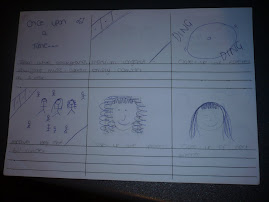Propp's theory is a form of structuralism, which is a view that all media is inevitably int he form of certain fixed structures. Those structures are often culturally derived and form expectations int he mind of an audience from within that same culture. For example, Fairytales always have happy endings or the princess always marries the handsome prince.
Propp's theory can be applied to genetic structures in western culture, such as popular film genres. This genre structure forms expectations in the mind of an audience that certain rules apply to the narrative. However, cultural change can force structures to change. For example, A hero can now be a woman.
8 Character roles and 31 Functions
8 Characters:
1. The Villain
2. The Hero - A seeker character motivated by an initial lack
3. The Doner - Who provides an object with some magic
4. The Helper - Who aids the hero
5. The Princess - A reward for the hero and object of the villains schemes
6. Her Father - Valudates the hero
7. The Dispatcher - Who sends hero on his way
8. The False Hero
Peter Pan and the 8 Characters:
1. The Villain - Captain Hook
2. The Hero - Peter Pan
3. The Donor - Tinkerbell
4. The Helper - Tinkerbell
5. The Princess - Wendy Darling
6. Her Father - George Darling
7. The Dispatcher -
8. The False Hero -
Thursday, 15 October 2009
Subscribe to:
Post Comments (Atom)






No comments:
Post a Comment